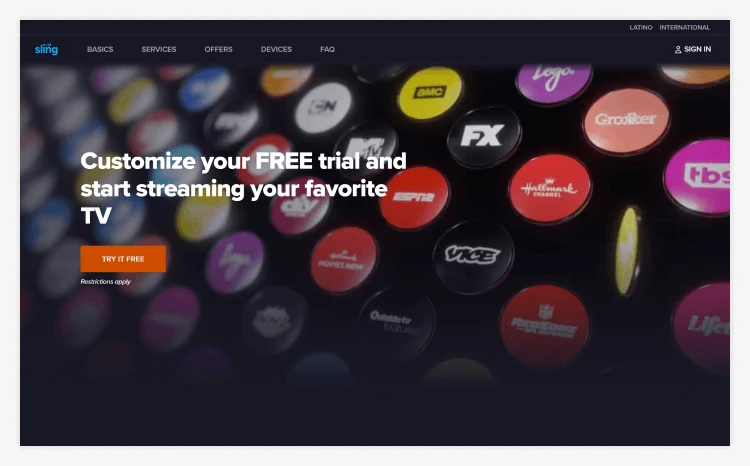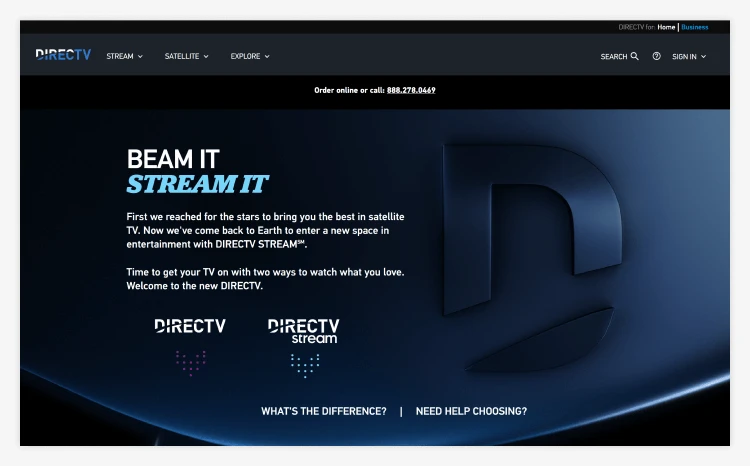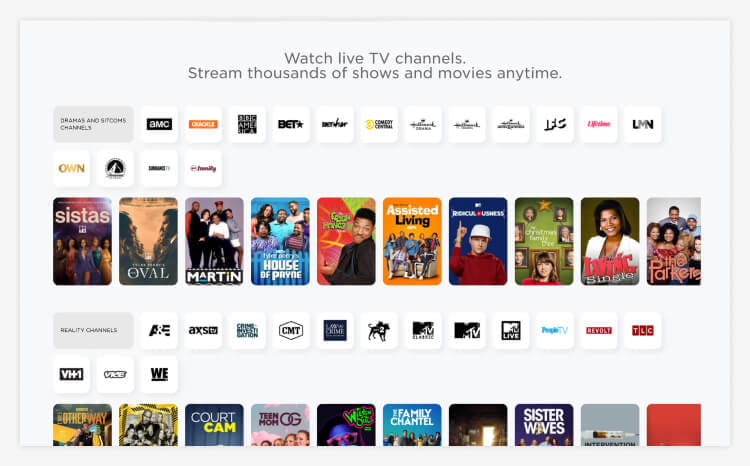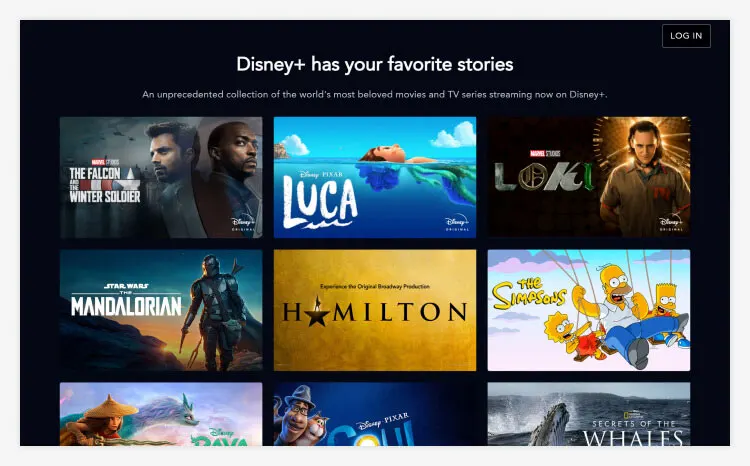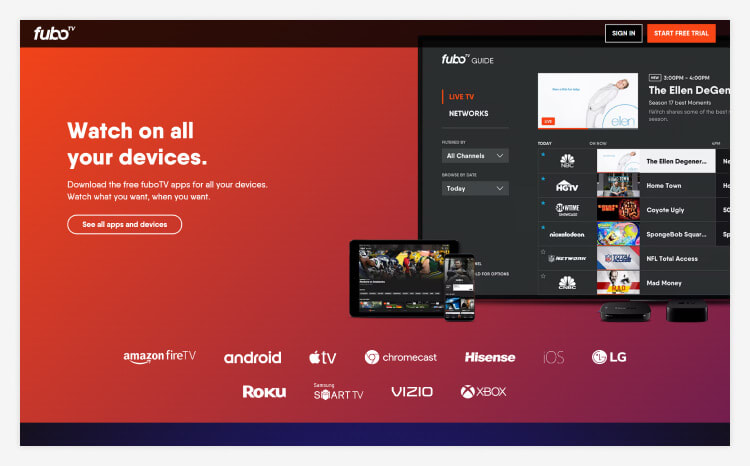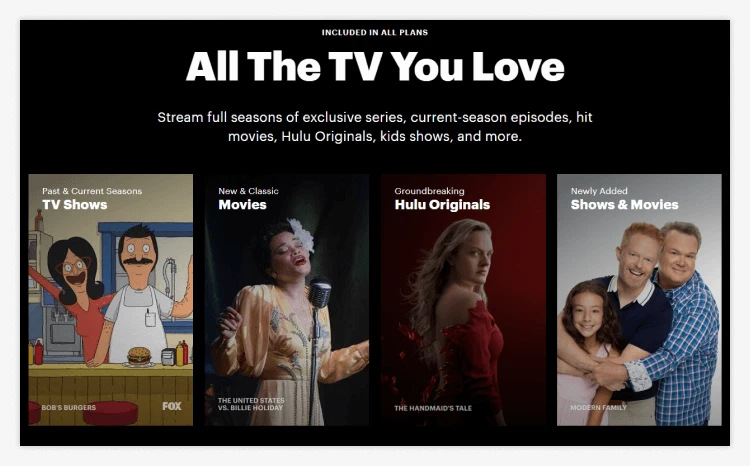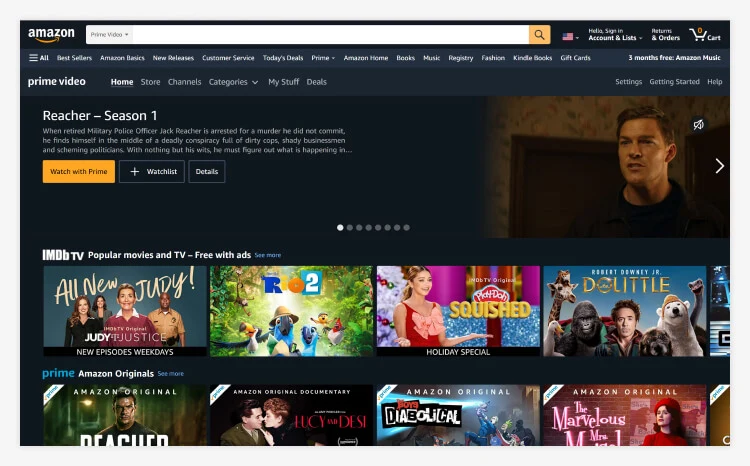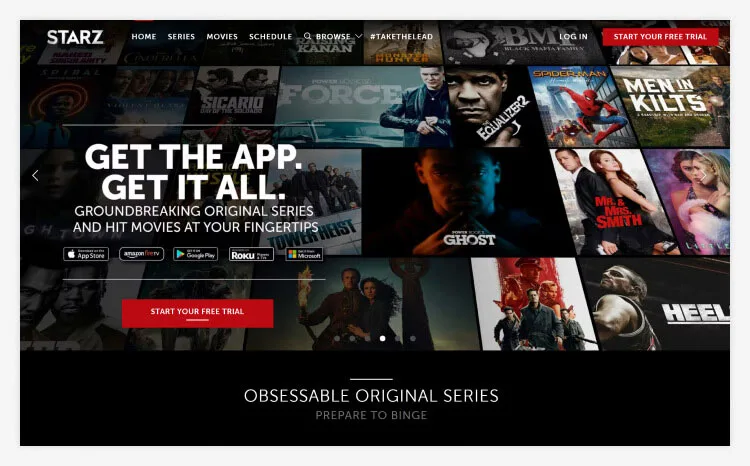What is TV Streaming?
Streaming is a process that allows you to watch TV via devices that are connected to the internet, such as smart TVs, laptops, smartphones, and gaming consoles. You can screen both pre-recorded or on demand content, such as movies and TV shows, and live events, including sports matches and awards shows.
Before you can stream TV, you’ll normally need to sign up to a subscription service, which will provide you with access to its content for a monthly fee.
Although there are dozens of streaming services available, providers such as Netflix, Amazon Prime Video, Hulu, Disney Plus, and Sling TV are among the biggest. Following the surge of popularity in streaming during the mid-2010s, many of the best TV shows and documentaries are now shown exclusively on these services. Some shows will also be released through other mediums such as DVD after they have premiered on a streaming service.
Unlike scheduled programming, on-demand streaming doesn’t require you to watch at a certain time of day, which makes it a more convenient option for many viewers. And, unlike network or cable television, much of the live and on demand content available through streaming services is ad free.
In addition to TV shows and movies, you can use streaming to watch—or listen to—music videos, podcasts, and webcasts.
How Does TV Streaming Work?
Streaming works by transmitting video and audio data through a computer network or internet connection, which your device will then playback in real time.
As with any files sent over the internet, the audio and video files transmitted for TV streaming are separated into packets of data, which each contain a portion of the file. Once your device receives the information in these files, it will render this data as the images and sounds that appear on your screen.
Because streaming operates on a continuous basis, you can begin watching a piece of content while the remainder is still in the process of being transmitted. The rest of the file will be sent as you watch, which means you shouldn’t experience any interruption to your viewing.
Although many people tend to confuse streaming and downloading TV, there are several key differences between the two. Unlike streaming, downloading requires you to receive an entire file before you can begin playing it back, which often makes streaming a quicker and more efficient process. And, unlike downloaded files, any content you stream won’t be saved locally on your device.
What Do I Need to Use TV Streaming?
To get started with streaming TV, you’ll normally need a stable internet connection, access to a streaming service, and a device with online capability.
If you’re planning to watch on a TV, you’ll need a smart TV or streaming device. Almost all TVs sold today are smart TVs, which means they are capable of connecting to the internet and have apps for streaming services already installed.
A streaming device is a piece of equipment that will connect to your home theater system or TV and allow you to view content through a streaming service. Popular streaming devices include Amazon Fire TV Sticks and Roku Streaming Sticks.
Before you start streaming TV, you should check your internet speed to ensure your connection can process the data required for streaming quickly enough. In general, you’ll need speeds of at least 3MBPS to stream standard definition videos and at least 5MBPS for high-definition content. If you’re planning on watching 4K Ultra HD content (which is at an extremely high resolution), you may need up to 25MBPS.
You should also check your data allowance before you begin watching TV online as streaming can eat up a good chunk of your permitted usage. According to Netflix, streaming one hour of standard definition video uses approximately 1GB of data and streaming at high definition can use up to 3GB, while Ultra HD can consume up to 7GB.
How to Choose The Right TV Streaming Service for Your Needs?
With so many excellent streaming services available, finding the right one will ultimately be a personal decision. However, there are certain key factors you might want to consider.
When you’re choosing a subscription service, your main priority is likely to be finding a provider that offers the shows, or at least the genres of TV, that interest you. Likewise, you should search for a provider that offers your preferred networks and channels if you’d prefer to stream live TV content. You can find more information about which services are best for which types of viewing in the chart above.
Although there are several free streaming services available, these tend to offer extremely limited content, which means they may not be suitable for more dedicated viewers. For many people, ease of use is another key consideration when choosing a streaming service.
If you’re not particularly tech-savvy, you don’t want to waste time searching through the service’s directory to find your desired show or broadcast. Although the more established services have plenty of experience in creating user-friendly viewing experiences, you may find some of the interfaces on newer streaming services less easy to navigate.
If you’re a fan of watching TV on the go, you may prefer a streaming service with a reliable mobile app that will allow you to easily stream content on your phone regardless of your location.
You should also consider whether you’ll need a provider that offers concurrent streaming. As the name suggests, this feature will allow you—and other members of your household—to watch more than one piece of content through a single account at any given time.
If you and your family have different tastes in TV, the freedom to watch multiple streams could prove essential for family harmony. Although every service is different, some providers allow you to watch up to 4 streams concurrently.
As with any of the utilities or services in your home, cost is likely to be a key factor when you’re choosing a streaming service. As well as seeking a service with a reasonable monthly fee, you should check whether the provider offers any free trials or if you could save money by opting for a budget plan. In many cases, streaming services will charge a lower monthly fee for packages that offer only standard-definition videos or do not allow you to stream on multiple devices.
Is TV Streaming Cheaper Than Cable?
Streaming TV is usually cheaper than cable, though this does vary depending on where you live and the type of content you watch.
If you choose streaming without live TV, it will certainly be cheaper than cable, even if you choose to subscribe to multiple streaming services. Live TV streaming tends to be cheaper than cable, even when you include the cost of your internet service.
The only case where cable might be cheaper is if you want to stream a lot of live sports from regional sports networks.
Which Streaming Service Is Best for Live Sports?
ESPN+ is a popular choice. You get access to thousands of live-streamed sports events and it works as a standalone service that can be an addition to your existing TV package.
ESPN+ covers a great range of live events happening both domestically and abroad. It offers an on-demand replay option for matches you miss and is particularly good for UFC fans, as you can get exclusive access to pay-per-view events.
fuboTV is another great option. You can pick and choose the channel packages you’re most interested in. The Sports Plus with NFL RedZone includes 25 specialist sports channels. The International Sports Plus offers 11 sports channels with a focus on international events.
Can I Watch Local Channels Without Cable?
Many people hold on to their traditional cable service because they don’t want to lose their local channels, but lots of streaming services now let you view these channels too. DirectTV, YouTube TV, fuboTV, and Hulu + Live TV are some of the streaming services that offer local TV channels.
Other services like Sling TV and Vidgo offer some of the bigger local broadcast networks, but availability varies by location.
How Did We Choose These Live TV Streaming Services?
We signed up and tested the live TV plans from each of the live TV streaming services offered in the United States. Some of the metrics we consider to be most important to a good live TV streaming service include:
- The number of channels included
- Local channel coverage
- Premium channel lineup (Food Network, Fox Sports, HBO Max, Apple TV, MLB Network, etc.)
- Cost
- Mobile apps
- Plan customizability
- Reliability
- User interface
- User reviews
- Extra features like stream recording















